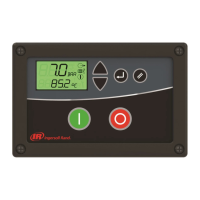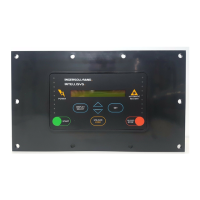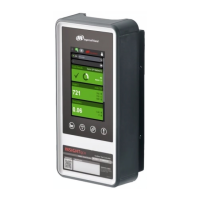31
SECTION 7 — FAULT CODES
WARNINGS / ALARM MESSAGES
A warning or an alarm is signaled by the relevant LED on
the front of the frequency converter and indicated by a
code on the display.
A warning remains active until its cause is no longer
present. Under certain circumstances operation of the
motor may still be continued. Warning messages may be
critical, but are not necessarily so.
In the event of an alarm, the frequency converter will
have tripped. Alarms must be reset to restart operation
once their cause has been rectified.
This may be done in three ways:
1. By using the [RESET] control button on the
LCP.
2. Via a digital input with the “Reset” function.
3. Via serial communication/optional Fieldbus.
After a manual reset using the [RESET] button on
the LCP, the [AUTO ON] button must be pressed to
restart the motor.
If an alarm cannot be reset, the reason may be that its
cause has not been rectified, or the alarm is trip-locked
(see also table on following page).
Alarms that are trip-locked offer additional protection,
meaning that the mains supply must be switched off
before the alarm can be reset. After being switched back
on, the frequency converter is no longer blocked and may
be reset as described above once the cause has been
rectified.
Alarms that are not trip-locked can also be reset using
the automatic reset function in par. 14-20 Reset Mode
(Warning: automatic wake-up is possible!)
If a warning and alarm is marked against a code in the
table on the following page, this means that either a
warning occurs before an alarm, or else that you can
specify whether it is a warning or an alarm that is to be
displayed for a given fault.
This is possible, for instance, in par. 1-90 Motor Thermal
Protection. After an alarm or trip, the motor carries on
coasting, and the alarm and warning flash. Once the
problem has been rectified, only the alarm continues
flashing until the frequency converter is reset.

